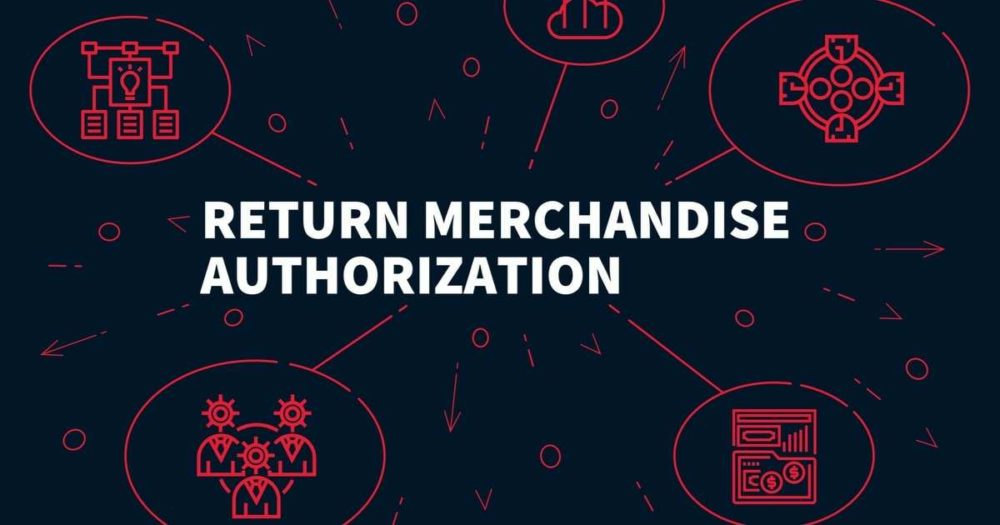Return merchandise authorizations (RMAs) allow companies to monitor and perform returns and exchanges for buyers. RMA processes exist to make the practice smooth for consumers. It also makes it cost-effective for the seller and faster for the financial system.
However, not all processes are created equal, and you need to understand the benefits of having an one in place and what best practices should be applied to it. Without this fundamental aspect of the business, you face losing thousands in the cost of labor, time, and money from unauthorized, lengthy return authorization processes.
Benefits of Having an RMA Flow
The benefits of having an RMA procedure are fairly simple. It allows your business to focus on production, not returns. An RMA logistics procedure speeds up the returns process, which in turn, makes your consumers happier. It should encourage consumers to spend more money, and it needs to emphasize your desire to please the consumer after the sale.
When a return is pre-authorized, or it has gone through the RMA process, your system is ready to accept the return, credit buyer accounts, and make a determination on what will happen to the merchandise upon arrival. Basically, RMA processing weeds out the invalid returns, offers exceptions when return periods end and helps keep your business thriving.
Best Practices For Creating a Return Authorization Procedure
Saying you have a process and taking full advantage of it remain two vastly different concepts. An RMA policy could be simply requiring a receipt for the return. However, if your computer system automatically recognizes the item’s serial number, creates a return label, and schedules pickup from the consumer’s doorstep, your business can effectively eliminate nearly all of your costs for handling returns. This is a simplified example of the best practices for Return Merchandise Authorizations. Let’s see what other RMA best practices need to be included in your business for your process and physical handling of the return.
Separate Physical and Accounting Processes for Merchandise Return
When an item arrives, it’s tempting to immediately assign all of the merchandise as credited. However, you need to differentiate between items being returned for other purposes and items returned for refund and credit. If a shipment arrives at the facility, some items may need processing for extraction of recyclable metals and others may warrant a replacement. By making this distinction, you can reduce your chances for errors throughout the RMA arrival process.
Utilize RMA Software and Divide Warehouse Operations Responsibility
Rather than allowing physical staff to assign consumer credits upon merchandise return, the warehouse should use an automated system. Furthermore, this will allow the employees to monitor the inventory of the warehouse and reroute the item appropriately, especially if any part of the RMA information capture process was incorrect.
Merchandise Returns Management Life Cycle: Why Versus Quality
Consumers may have any number of reasons for returning an item. It may be old, defective, a recall, an improper size, the wrong color, or a case of buyer’s remorse. However, it is not the consumer’s rationale for returning the item that determines the item’s future; it’s the condition of the item. Furthermore, when the item arrives at the return center, workers must understand how the quality of the return affects the item’s lifecycle. If the item is irreparable, then it must be disposed of. Otherwise, it may be repackaged and sent to another consumer. Additionally, those working in the processing of the RMA claim, particularly when a consumer is going to receive credit, must understand why the item was returned. Ultimately, this determines the next step of the consumer journey: exchange, credit on a future purchase, or selection of a replacement part.
Expect RMA-Merchandise Prior to Arrival
When an RMA has been granted, especially when RMA processes are automated, the receiving facility must anticipate and prepare for its arrival in advance. For example, tracking information for merchandise tagged with radio frequency identification (RFID) chips needs to be entered into the system before the item arrives. This prevents system error messages and lost merchandise.
Must-Have RMA Equipment For a Seamless Process
RMA best practices refer to the steps behind accepting an RMA and processing. However, the physical handling of the return is often completed through the use of some key equipment and management systems. Take a look at how this equipment expedites the process below.
Handheld Scanners and Automated Scanning Software
The receiving facility may be receiving multiple truckloads of merchandise returns at any given time. Therefore, writing down the ID numbers for returns is impractical. Handheld scanners, or even automated scanning systems, can dramatically reduce the time for identifying if an item has been received. Furthermore, scanners play a significant role in the next two aspects of the physical return authorization process world.
Interface With Warehouse Management System
When an item arrives, it should automatically trigger the subsequent events for the facilities warehouse management system. For example, computer part A arrives due to being the wrong color. The WMS should identify this item as available, and the item needs to be stocked on the floor. Alternatively, if the item needs to go for repairs, the WMS should send the item to the appropriate pallet, loading dock, or repair area.
Accounting Software That Supports Returns Management
In close relation to the WMS-interface, the arrival of a return should automatically trigger a response from the accounting system. For example, upon arrival, the consumer receives his requested credit on his account.
Return Merchandise Authorizations Procedure: Create Efficiencies & a Seamless Customer Experience
When considering the best practices for enhancing an return authorization process and carrying out the returns, the whole process should focus on achieving three things: make it easy and fast, make customers happy, and pawn off the process. The last part sounds strange, but it actually means employing 3PL for transportation and logistics services help you reduce your expenses in the returns process. Connect with an expert to discuss solutions today.


